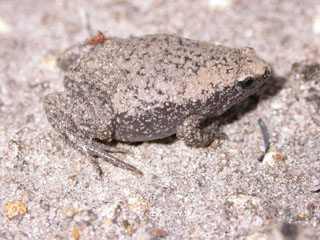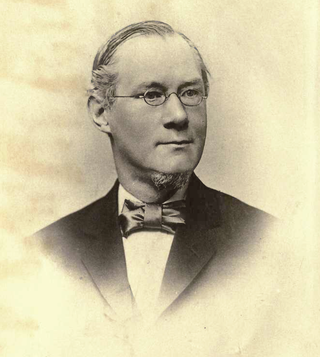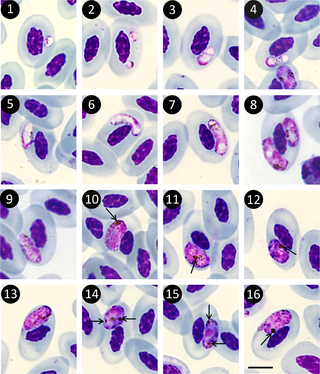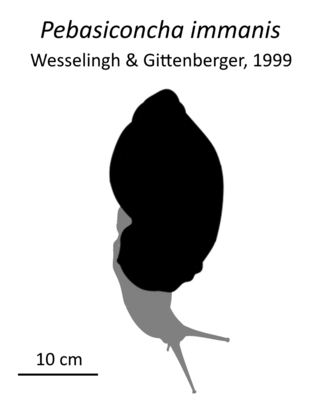
Felis is a genus of small and medium-sized cat species native to most of Africa and south of 60° latitude in Europe and Asia to Indochina. The genus includes the domestic cat. The smallest Felis species is the black-footed cat with a head and body length from 38 to 42 cm. The largest is the jungle cat with a head and body length from 62 to 76 cm.

The Microhylidae, commonly known as narrow-mouthed frogs, are a geographically widespread family of frogs. The 683 species are in 57 genera and 11 subfamilies.

The Polyporaceae are a family of poroid fungi belonging to the Basidiomycota. The flesh of their fruit bodies varies from soft to very tough. Most members of this family have their hymenium in vertical pores on the underside of the caps, but some of them have gills or gill-like structures. Many species are brackets, but others have a definite stipe – for example, Polyporus badius.

Aonyx is a genus of otters, containing three species, the African clawless otter, the Congo clawless otter, and the Asian small-clawed otter. The word aonyx means "clawless", derived from the prefix a- ("without") and onyx ("claw/hoof").

The brown-tailed mongoose, brown-tailed vontsira, Malagasy brown-tailed mongoose, or salano is a species of mammal in the family Eupleridae. It is endemic to Madagascar. Its natural habitat is moist lowland tropical forest. It is threatened by habitat loss.

Megalobulimus is a genus of air-breathing land snail, a terrestrial gastropod mollusk in the subfamily Megalobuliminae within the family Strophocheilidae.

Strophocheilidae is a taxonomic family of air-breathing land snails, terrestrial pulmonate gastropod mollusks in the superfamily Acavoidea.

George Washington Tryon Jr. was an American malacologist who worked at the Academy of Natural Sciences in Philadelphia.
Erythrochampsa is an extinct genus of protosuchian crocodyliform. Fossils have been found from the Red Beds of the Stormberg Group, the youngest group of strata from the Karoo Supergroup outcropping in South Africa.

The Haemosporida are an order of intraerythrocytic parasitic alveolates.

Megalobulimus oblongus, also known as Strophocheilus oblongus, is a species of air-breathing land snail, a terrestrial pulmonate gastropod mollusk in the family Strophocheilidae.

Pyrgomorphidae is a family of grasshoppers in the order Orthoptera; it is the only family in the superfamily Pyrgomorphoidea. Pyrgomorphidae is found worldwide in tropical and warm temperate regions, but the vast majority of the family's approximately 500 species are from Africa, Asia and Australia. Their name is probably derived from pyrgos meaning "tower": a reference to the form (morph) of the head in the type genus Pyrgomorpha and other genera.

Pebasiconcha immanis is an extinct species of air-breathing land snail, a terrestrial pulmonate gastropod mollusk in the family Acavidae. The type locality of Pebasiconcha immanis is the Miocene Pebas Formation in the Colombian and Peruvian Amazonia.
Angeiocystis is a genus of parasitic alveolate eukaryotes belonging to the phylum Apicomplexa.

Eoborus is a fossil genus of medium-sized air-breathing land snails, terrestrial pulmonate gastropods in the family Strophocheilidae. Eoborus is the oldest fossil record of Strophocheilidae, dating from the Middle Paleocene of Brazil and Uruguay. The Brazilian species, alongside Eoborus charruanus from Uruguay, are the oldest fossil record of the family.

Eoborus sanctijosephi is a fossil species of air-breathing land snail, a terrestrial pulmonate gastropod mollusk in the family Strophocheilidae, from the Paleocene Itaboraí Basin, Brazil. Eoborus sanctijosephi is a large species in the genus Eoborus. Its name makes reference to the place of discovery: the São José de Itaboraí municipality, where Itaboraí Basin is located.
The Cremifaniidae are a very small family of acalyptrate flies with only 4 described species worldwide. All species are considered rare, and nothing is known of their life history. They were formerly placed in the family Chamaemyiidae.
Proacrodon is a dubious genus of extinct mammal from South America. Its type species is Proacrodon transformatus. The only known specimen, a lower premolar or molar, is now lost, and its affinities are unknown.










